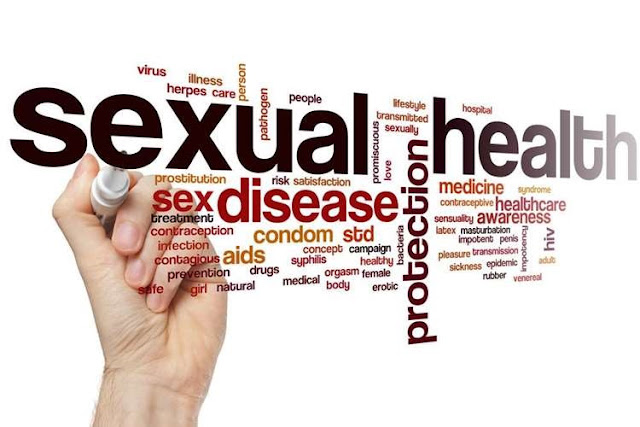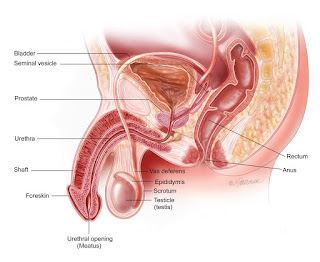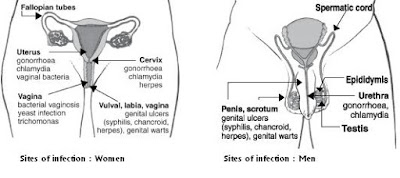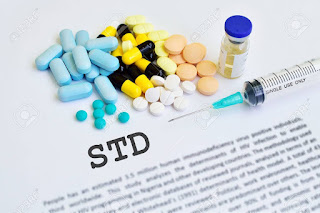 |
| Sexual health protection |
How do you know if you have one? What is the best treatment? The information provided here can help answer these questions.
How do male reproductive organs work?
The male reproductive system is unique to the following functions:
To produce, maintain and transport sperm (male reproductive cells) and protective fluid (sperm)
To release sperm in the female reproductive tract
To produce and secrete male sex hormones
 |
| Male Reproductive organs |
Male reproductive anatomy involves external structures:
Gender
Scrotum
Testes
Male reproductive anatomy involves internal structures:
Vas deferens
Ejaculation tubes
Urethra
Seminal vesicles
Prostate gland
Bulbourethral glands
How do female reproductive organs work?
The female reproductive system serves many functions. The ovaries produce female egg cells, which are called ova or oocytes. The oocytes are then transported to the fallopian tube, where they are fertilized by sperm. The fertilized egg then travels to the uterus, where the lining of the uterus becomes thicker in response to the normal hormones of the reproductive cycle. Once the fertilized egg is in the uterus, the frozen uterine layer can be implanted and developed. If fertilization does not occur, the uterine layer is removed as a stream of fluid. Also, the female reproductive system produces female sex hormones, which maintain the reproductive cycle.The female reproductive system slowly ceases the development of female hormones after menopause to work through the reproductive cycle.. At this point, the strukku cycle becomes irregular and eventually stops. A year after the Stru Thu cycle, a woman is considered menopausal.
Female reproductive anatomy involves both external and internal structures.
The function of external female reproductive structures (genitalia) is twofold: to protect the internal genital organs from sperm entering the body and from infectious organisms. The female reproductive system's principal external mechanisms are:
The labia majora
Labia Minora
Bartholin glands
Clitoris
 |
female reproductive organs |
Female reproductive anatomy involves internal structures:
Vagina
Uterus (Pregnancy)
Ovary
The ovarian pathway from the ovary
Symptoms
Often, there are no symptoms.Men may experience the following symptoms:
Penis irritation or itching
Discharge from the penis
Pain around the pelvis
Blisters, blisters or ulcers on the penis, anus, or mouth
Burning and pain with urine or bowel movements
Often having to go to the bathroom
Women may experience the following symptoms:
Vaginal burning or itching
Discharge from the vagina
Pain around the pelvis
Non-normal vaginal bleeding
Severe pain during sex
Blisters, blisters or ulcers in the vagina, anus, or mouth
Burning and pain with urine or bowel movements
Often having to go to the bathroom
Cause
What are the causes of STDs?
STDs are bacteria and viruses that grow in hot, humid areas of the body. They're transmitted via sex from one human to another. The infection spreads through the penis, vagina, mouth or anus. These infections can be minor or they can be very painful, even fatal. |
| sexually transmitted Control |
 |
| sexually transmitted infection |
How does a sexually transmitted infection spread?
They circulate through the body fluids. Also widely expressed in vaginal, oral or anal sex. Most STDs transfer by infected blood, from one human to another. For example, in people who share infected drug needles. Or the mother infects her baby during pregnancy, childbirth or nursing.
STDs do not spread by accidental contact. For example, shaking hands, sharing clothes or sharing toilet seats does not lead to STDs.
Who's in danger?
Anyone is at higher risk for STD adolescents and young adults. They have multiple sexual partners, and they don't know how to avoid problems. Street-drug users often run the risk of using dirty needles.
Diagnosis
 |
| STIs |
A blood test will show if you have any infection.
If you have bacteria in the urine from STI, urine samples can be shown.
Fluid samples can show if you have active injuries and can help diagnose the type of infection.
Treatment
What are the most common types of STIs / STDs and how are they treated?Chlamydia
Gonorrhea
Syphilis
Genital herpes
Immune Deficiency Syndrome (AIDS)
Hepatitis B (HBV)
Genital Warts (HPV)
trichomoniasis
It is the most common bacterial STI in the United States. 1.4 million new cases are diagnosed each year. It spreads through the unprotected vagina and anal sex.
Sometimes people do not indicate that they have the disease. A person with chlamydia may feel pain when urinating or dropping fluid from the penis. A woman may have bleeding between periods, feel pain when urinating, see discharge or feel mild abdominal pain. With anal intercourse, the patient may have anal bleeding or pain.
A person may be treated with an antibiotic if diagnosed. If left untreated, it can cause serious damage to the woman's reproductive system. Pregnancy can be difficult or impossible.
Gonorrhea can cause genital, rectal and throat infections.. Young people aged 15-24 years are most affected. You can achieve this by having oral sex with an unprotected vagina, anus, or someone else.
It may not show any symptoms. Or, a person may get discharge from the penis or vagina and experience pain while urinating.
Gonorrhea is treated with antibiotics. If left untreated, it can cause serious damage to the woman's reproductive system. Getting pregnant may be difficult or impossible. In men, if left untreated, it can cause diarrhea.
It is a life-threatening bacterial infection from the vagina, anus, or oral sex. Injuries caused by syphilis can spread to the skin of a healthy person. There may be lesions on the penis, vagina, anus, rectum or lips and mouth. Syphilis can also spread from an infected mother to an unborn baby.
Typically, the first symptom is a painless open wound. Injuries can occur on your genitals or the soles of your hands and palms. The second stage rashes appear as thick, red or reddish-brown spots.
Penicillin is a successful treatment. If left untreated, syphilis can remain in the body for years. It can cause serious problems such as paralysis (inability to move parts of the body), mental disorders, damage to organs, and death.
This infection is very common. One in six (age 14-49) men has genital herpes. Most people don't know they have it. This infection is caused by two viruses, herpes simplex virus type 1 (HSV-1) and herpes simplex virus type 2 (HSV-2).
Herpes simplex virus type 1 (HSV-1) is mostly transmitted by non-communicators but is spread with oral sex. HSV-1 usually causes wounds on the lips.
Herpes simplex virus type 2 (HSV-2) spreads frequently during sex when the fluid hits the partner. HSV-2 may not cause genital warts.
Blisters can form, rupture, cause pain and take several weeks to heal. There is no known treatment for HSV but symptoms can be treated with antiviral drugs.
AIDS is caused by a human immunodeficiency virus (HIV) infection. It is not curable and can be fatal. It attacks the body's immune system.
Only the blood, semen (cum), pre-seminal fluid (pre-cum), feces, vaginal fluid and mother's milk contain the virus. Infected needles or other sharp devices can also spread AIDS. An infected mother can pass the virus on to her baby during pregnancy, childbirth or nursing.
Some people have no sign of getting it. Others think they have had the bad flu for a long time. The virus goes undetected for many years. If you feel that you are in contact with an infected person, you should be tested.
Antiviral and HIV medications are available to improve the life and health of the infected person.
This STI is a severe virus that attacks the liver. Effective vaccines have helped prevent this infection since the 1990s. Fewer cases occur each year. The virus will transmit through the blood, sperm, and body fluids exchanged during pregnancy. Many people develop the disease from an infected mother. It is important to look for people with HBV for a long time but often there are no obvious symptoms in people.
When symptoms are present, they may include fever, headache, muscle aches, fatigue, loss of appetite, vomiting, and diarrhea. Since HBV attacks liver cells, it can lead to cirrhosis, liver cancer, liver failure, and death. Dark-colored urine, abdominal pain, and yellowing of the skin or eyes are signs of liver damage.
There is no known treatment for hepatitis B. However, medications can help treat chronic infections. Vaccination is the best defense. There is no cure for acute HBV. Chronic HBV is treated with antiviral drugs, interferon therapy or liver transplantation. Vaccination is the best prevention.
Human papillomavirus (HPV) occurs in these warts. HPV is the most predominant American viral STI. It can spread through vaginal or anal sex. It can also be sent when the infected person has no symptoms.
Developing warts include painless, fleshy, cauliflower-looking bulbs. They can grow on the penis or around the entrance to the vagina and anus. HPV may eventually lead to cervical cancer.
Fortunately, an effective vaccine is available to prevent HPV and genital warts. The vaccine is administered to children aged 11 or 12 or to those aged 20-26 years. There is no known treatment for genital warts. However, they can be treated with topical ointments. Sometimes with mild surgical procedures (e.g. cuticle (wart closing or burning), additives or lasers), they can be removed. Vaccination is the best prevention.
This STI is caused by a parasite. It is transmitted through sexual contact with the penis or vagina. It mainly affects young, sexually active women. Insecure males are more likely to spread the infection. Only 30% of people with this STI have symptoms.
Men with this STI may feel itching or burning inside the penis. They may experience discharge or inflammation after urination or ejaculation. Women may have itching, burning, redness or rash, discomfort with urination. Or, they may have an abnormal discharge with odor. Having trichomoniasis can make you feel unpleasant for sex.
The infection may last for months, or years, without medication. With this, women can give birth to underweight children. Trichomoniasis can be easily treated with antibiotics.
 |
| STDs |
After treatment
Most STIs / STDs heal after treatment. Some require lifelong maintenance with antiviral drugs. STDs may return with risky sexual behavior. Some people choose to be tested more often, to make sure they don't have STI. It is possible to avoid STIs and limit the possibility of another.
6 Comments
In this manner my buddy Wesley Virgin's adventure begins with this SHOCKING AND CONTROVERSIAL VIDEO.
ReplyDeleteYou see, Wesley was in the army-and shortly after leaving-he discovered hidden, "SELF MIND CONTROL" tactics that the government and others used to get anything they want.
As it turns out, these are the same tactics lots of celebrities (notably those who "became famous out of nowhere") and elite business people used to become rich and successful.
You probably know that you use only 10% of your brain.
That's mostly because most of your brain's power is UNCONSCIOUS.
Maybe this expression has even occurred INSIDE OF YOUR very own head... as it did in my good friend Wesley Virgin's head 7 years back, while riding an unlicensed, beat-up bucket of a vehicle without a license and with $3 in his bank account.
"I'm so frustrated with going through life paycheck to paycheck! When will I become successful?"
You've taken part in those thoughts, isn't it right?
Your own success story is waiting to start. You just have to take a leap of faith in YOURSELF.
Learn How To Become A MILLIONAIRE Fast
How can i ever stop saying thank you to Dr.WOBE, After taking his product today my life is healthy and balance am living up to my expectation. For the past 11 years i have been struggling with with my Hiv issue, i have tried a lot of medications from different doctors but all to no avail. I have spent money on it but no cure until i took this product from Dr.WOBE just within few weeks i got cured of my Hiv diseases , if you are also suffering from any kind of disease then get immediate help now from Dr.WOBE for his products contact him email Drwobeherbalhome@gmail.com OR CALL HIM OR WHATS APP ON +2349064851206, he also cure the following diseases. HERPES, HSV, CANSER, KIDNEY diseases E.T.C god bless you all.
ReplyDelete
ReplyDeleteGod bless Dr. Patrick for his marvelous work in my life, I was diagnosed of HERPES since 2018 and I was taking my medications, I wasn't satisfied i needed to get the
HERPES out of my system, I searched out some possible cure for HERPES i saw a comment about Dr. Patrick how he cured HERPES,DIABETES,and CANCER with his herbal
medicine, I contacted him and he guided me. I asked for solutions, he started the remedy for my health, he sent me the medicine I took the medicine as prescribed by
him and 14 days later i was cured from HERPES, Dr. Patrick truly you are great, do you need his help also? Why don’t you contact him through his EMAIL:
patrickherbalcenter1@gmail.com call or whatsApp him on +23478118116254
Male Sexual Health Herbal Treatment
ReplyDeleteFemale Sexual Health Herbal Capsule
ReplyDeleteHey Nice Blog!!! Thank you for sharing information. Wonderful blog & good post.Its really helpful for me, waiting for a more new post. Keep Blogging!!!
ReplyDeleteBest Sexologist In Lucknow
Male Problem Doctor in lucknow
Post a Comment